4 TECHNIQUES TO TIE UP THE BOOTS
You surely learnt how to tie your shoes when you were a kid, but pay attention on how to lace up your hiking boots before to go on an adventure.
The tightness of your boots is fundamental to avoid pains on your feet but the traditional system of lace them up may not be sufficient or adeguate for all of us.
If you often have blisters, you feel uncomfortable pressure points or your laces constantly come undone, different lacing techniques allow you to relieve pressure on some critical points and get more support to you during the activity.
Here 4 ways to lace up your boots:
CRISS CROSS LACING SYSTEM
Probably the most basic and common method, it is perfect for any boots that already fit well, assuming you don’t have any particular foot problems. It is also the most comfortable because the laces simply criss-cross in their way up in the gap between the sides of the shoe, without being pressed against the top of the foot.
How to do:
1. Thread the lace through the bottom eyelets until you have an equal amount of lace on each side.
2. Beginning straight across on the inside and out and working in a diagonal direction, thread the left lace through the right eyelet and the right lace through the left to create a diagonal “X” pattern.
3. Continue with the same pattern until lacing is completed.

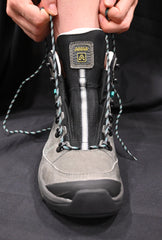
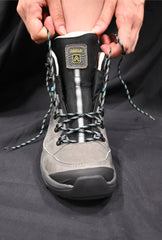
SURGEON’S KNOT
If your heel slips excessively during the hiking, it means that you have too much interior volume at the top of your foot. The Surgeon’s Knot (or Double Overhand Knot) technique allow you to adjust the tightness of the laces and to maintain constant tension at the points where your feet feel too loose. So, your foot may move naturally — without causing any excessive pressure or blister-inducing irritation.
This technique is usually suggested for who have narrow or flat feet.
How to do:
1. Lace your boots in the traditional way until the blocker hook you find in the metatarsal area on the top of your boots (or the point where your feet feel pressure at) and make sure that the laces over this are pulled snug;
2. Make the surgeon’s knot by wrapping the laces around each other twice and pulling them tight;
3. Thread the laces through the next eyelet to lock in tension from the knot;
4. Repeat the surgeon’s knot again after the next eyelet;
5. Thread again the laces through the next eyelet to lock in tension from the knot;
6. Continue lacing your boots with the normal diagonal lacing pattern.

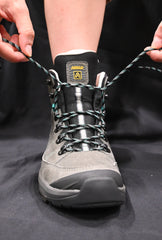
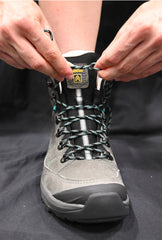

WINDOW LACING
If your boots start to create a pressure point on the top of your foot, you can try to alleviate the problem with a Window Lacing (or Box Lacing) which will make your boots a bit looser overall and help in this way to relieve discomfort from foot swelling.
This lacing technique is good for those with high insteps, wide feet and/or high arches.
How to do:
1. Unlace your boots down to the hooks that are just below the point where you feel pressure;
2. Lace your boots vertically, by going straight up to the next eyelet and then crossing the laces over - in this way you skip the lacing pattern in the pressure point;
3. Finish lacing the rest of your boot with the diagonally criss-crossing lacing pattern.
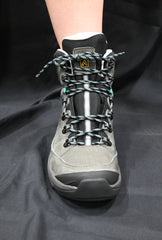
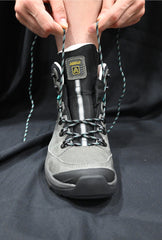

TOE-RELIEF LACING
If your toes are in a world of hurt during the activity, you can opt for is the Toe-relief Lacing: it is mainly a stopgap measure you can use also while in the middle of trail. This technique just relieves pressure in the toe box giving your digits more freedom.
By skipping the topmost eyelets, those with wider ankles or who experience blisters from the rubbing of the top of the boot againg their calves can gain more comfort.
How to do:
1. Completely unlace your boots;
2. Lace it up again, but just skip over the first set of hooks in the toe-box; in this way the pressure off your digits will be reduced.
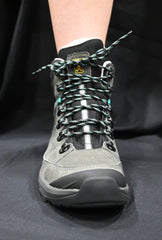
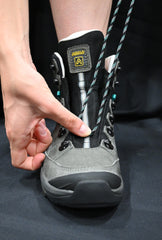
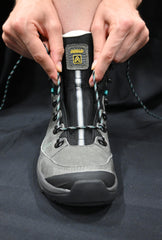

 SHIPPING
SHIPPING

 CONTACTS
CONTACTS